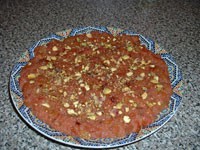Al-Taghrooda Poetry: Traditional Bedouin Chanted Poetry
By: Arab America Contributing Writer / Antonia Wagura
Did you know?
One of the distinguishing features of Al-Taghrooda is the exaggeration and extension of the Arabic vowel sounds as the lines of verse when chanted. In addition, UNESCO inscribed it in 2012 on the UNESCO Representative List of the Intangible Cultural Heritage of Humanity.
What is Al-Taghrooda?
The term Al-Taghrooda is a new term to many; however, it is popular in the United Arab Emirates and the Sultanate of Oman. Al-Taghrooda is a traditional Bedouin chanted poetry that is recited by men traveling on camelback through desert areas of the United Arab Emirates and the Sultanate of Oman.
Origin of the Bedouin Chanted poetry
Al-Taghrooda has its origin in the desert, the mountainous regions, and rural areas of UAE. It began among the Bedouin camel rider and herders. Nonetheless, it is today practiced and recited throughout the nation as a beloved component of the Emirati culture.
Bedouins believed that reciting entertained the riders and stimulated animals to walk in time. The chanted verses evolved as a way of passing the time during the long walks in the desert. Furthermore, it was a means to increase the pace as the chanters sped the rhythm.
The riders would improvise short poems of approximately seven lines and repeatedly chant between two groups. The lead singer would chant the first verse, and the second group would respond.
Poets would chant Al-taghrooda at campfires, weddings, and tribal and national festivities, notably camel races, and some Bedouin women would compose and chant while engrossed in work. The chanting would purpose to achieve social bonding during the oral exchange of verses.
Themes of Al-Taghrooda
Al-Taghrooda poetry is precise and does not use complicated metaphors. One of its most significant roles was to document the social and cultural history of the region.
Love and devotion are the most common themes in Al-Taghrooda. The singer chants love and devotion to loved ones, relatives, friends, and tribal chiefs. Poets also use Al-Taghrooda to comment on social issues and highlight historical accomplishments. They are a significant source of wisdom and insight into the Emirati culture.
Nonetheless, Al-taghrooda functions as a way of settling disputes among tribes and individuals and highlighting contemporary themes such as good thriving practices and health issues.
Functions of Al-Taghrooda Today
Today, the Al-Taghrooda performances provide an opportunity for audiences to learn about their history and have a peek at their traditions.
It also provides insights into the Emirati culture and its origins. Al -Taghrooda is not necessarily accompanied by chanting. It is often in written and recorded forms as well as live events.
In response to varying and transforming social and economic conditions: Al-Taghrooda poetry deals with modern and traditional themes when recited on various occasions.
Al-Taghrooda, over the years, has evolved into a popular celebration. It is a cultural identity and a sign of finesse for those who practiced the tradition in the past.
This type of poetry continues to be significant due to its popularity and to be important in connecting the diverse social groups in the region.
The famous poets known to excel in this heritage-based art in the United Arab Emirates include Obaid Ibn-Maa’aded Al Nua’imi (Al Wajan), Ahmad Ibn- Salem Bal Abda Al Shamsi(Al Ain) and Mohammed Ibn-Hamed, Al Manhali(Al Ain).
The bearer of this form of heritage should not be the poets. Since many people who chant this poetry are performers and improvisers. The reason for that is poetic expression is an individual talent. Sometimes it could be passed down or inherited through the family and can be picked up by accompanying elderly persons within the group at daily social gatherings.
Some forms of Al-Taghrooda have been in other folklore as Al Ayala and Al Lona. Furthermore, these poems have become one of the integral components of wisdom.
Al-taghrooda poetry follows the tafa’il, the rhythmic unit in the Arabic poetry system. The rhythmic unit in Al-Taghrooda is called sari’, also known as rajaz, and is a meter used in classical Arabic poetry.
Sum it up!
The Al-Taghrooda poetry has undergone changes in the past few decades due to the social and economic changes that have occurred in the region.
The fact that the poetry is part of the UNESCO list is an inspiration for Heritage Associations to give representations of social events and poetry competitions.
The Al-taghrooda poetry is a significant part of Emirati culture and helps bring diverse communities closer. The beauty of it is its positive effect on society and when chanted, the exaggeration of the Arabic vowel sounds.
We should all embrace and appreciate this beautiful piece of art, the Bedouin traditional chanted poetry.
Check out our Blog here!








